Challenge:
Since their launch in 2015, the Sustainable Development Goals (SDGs) have caused an uprise of Corporate Social Responsibility (CSR) engagements. However, perception of CSR varies greatly. While some recognize it to be an opportunity for growth and its benefits to attract prospective employees and consumers, many see it as a means to compensate the organizations’ negative influence on society and environment. Research shows that one approach to drive change is social intrapreneurship. By aligning CSR with outlets for entrepreneurship within the organization, there is an opportunity for corporations to identify new business opportunities as well as make long-lasting social impact.
Time Period: 10 Weeks
Role: Design Researcher, Program Designer
PROJECT TIMELINE
While I love working in teams, this 10-week studio project was an individual effort and my final feat for the Design for Sustainability program at the Savannah College of Art and Design.
RESEARCH METHODOLOGY
The project followed a mixed methods research, starting with a review of academic literature and statistical studies about CSR and social entrepreneurship. The insights generated from these studies were verified (or falsified) using an online survey with 81 participants from 6 countries. After the survey, it was clear that although CSR provided an organizational framework for social work, it often lacked scalable impact, business innovation and employee satisfaction that was seen in corporations with social intrapreneurship. A bridge was needed to connect CSR with social intrapreneurship. An initial Theory of Change outlined this vision.






In order to dive deeper into the problems faced by the CSR department in corporations and intrapreneurship, I conducted 6 in-depth interviews with subject matter experts (including CSR representatives and social intrapreneurs). Data from these interviews was clustered using inductive reasoning (affinitization) and mapped onto Empathy Maps for employees and CSR representatives. These empathy maps were further synthesized to create a value proposition.
“I took young people from a company on a train journey and we would meet social entrepreneurs. And, after seeing and meeting these entrepreneurs, people would feel like leaving their MBA programs and settling in a tier-two city just to work with them.”
- CSR Consultant
“Google employees feel that 'okay, my boss is gonna be there, my boss's boss is also gonna be there. So I should also probably attend.' I give this example to smaller companies that I work with and I tell them that you need to be there, you need to commit to the process for your team to be there.”
- DEI Entrepreneur
“There are great examples of companies who have a lot of engineers and who spend a lot of time and money on recruiting engineers with organizations that do science and technology education. And, those are long-term partnerships that inherently make sense. Companies should look at NPOs the same way.”
-Social Impact + ESG Consultant
“Of course, we have some commitment and we engage people but it's not happening naturally. There are few people who are inclined to these activities but they do it in their own leisure time.”
-CSR Representative
“For someone in the company to suggest an initiative, that someone must know that the company is involved in initiatives at all.”
-CSR Consultant
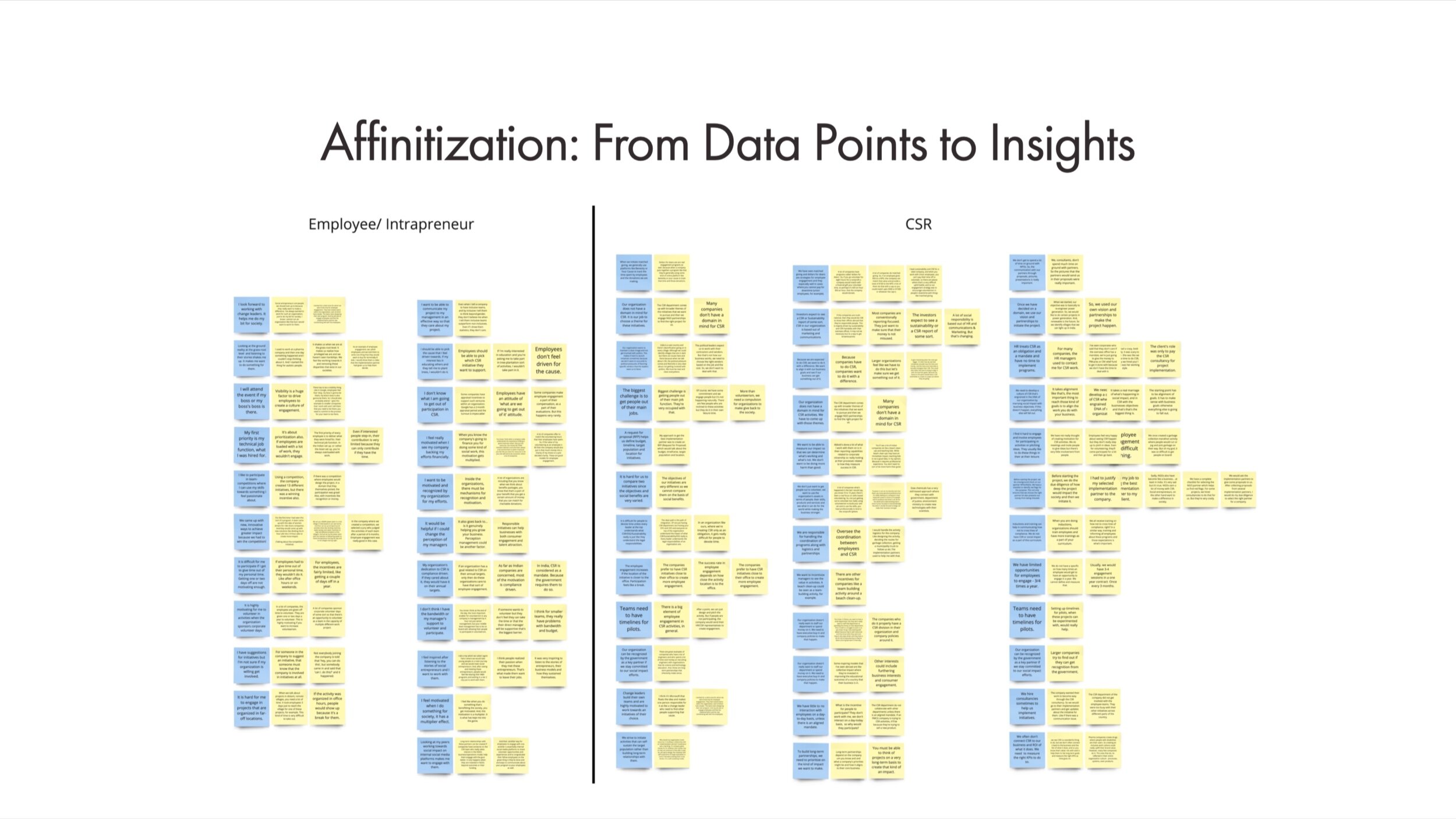
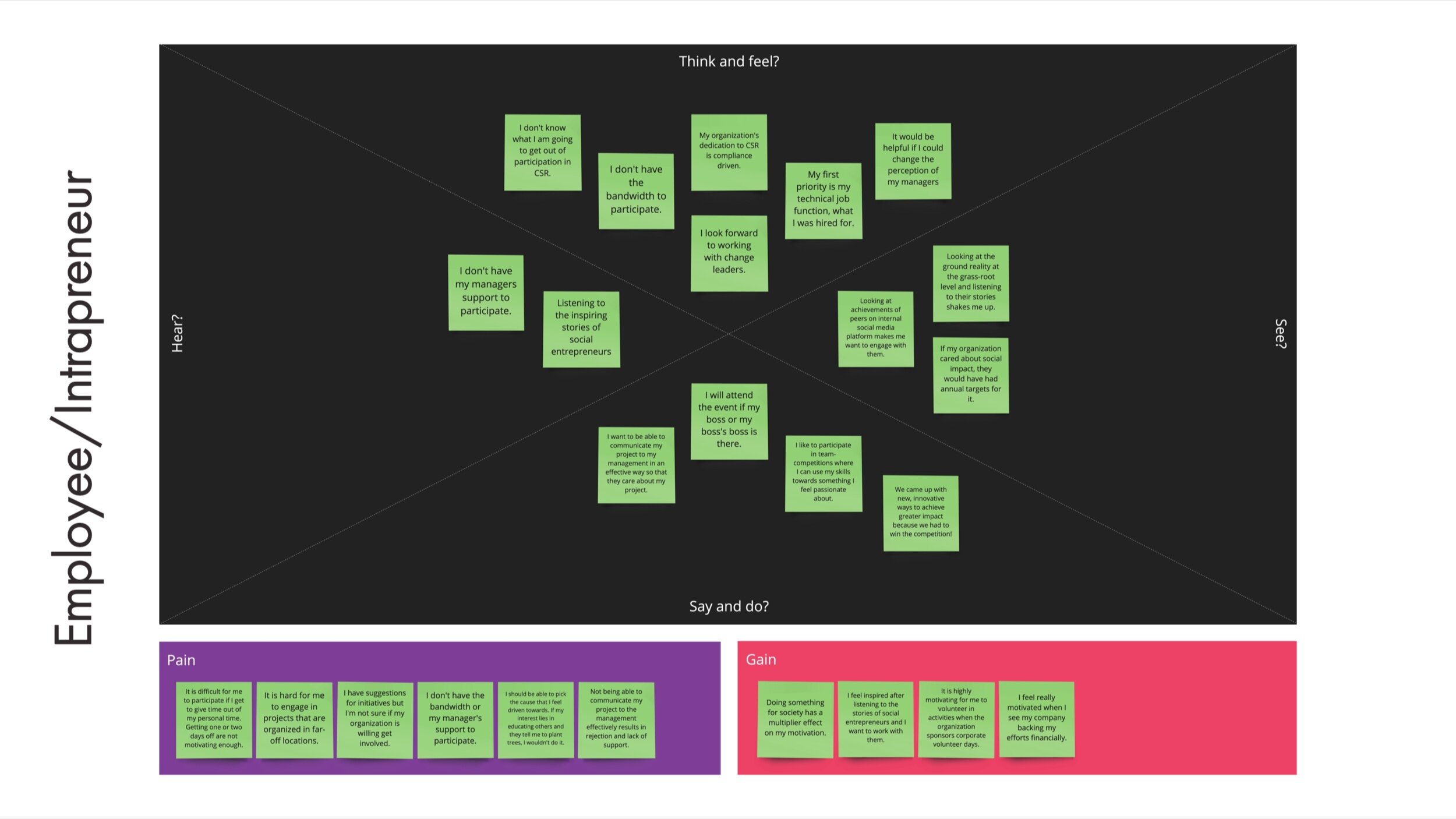
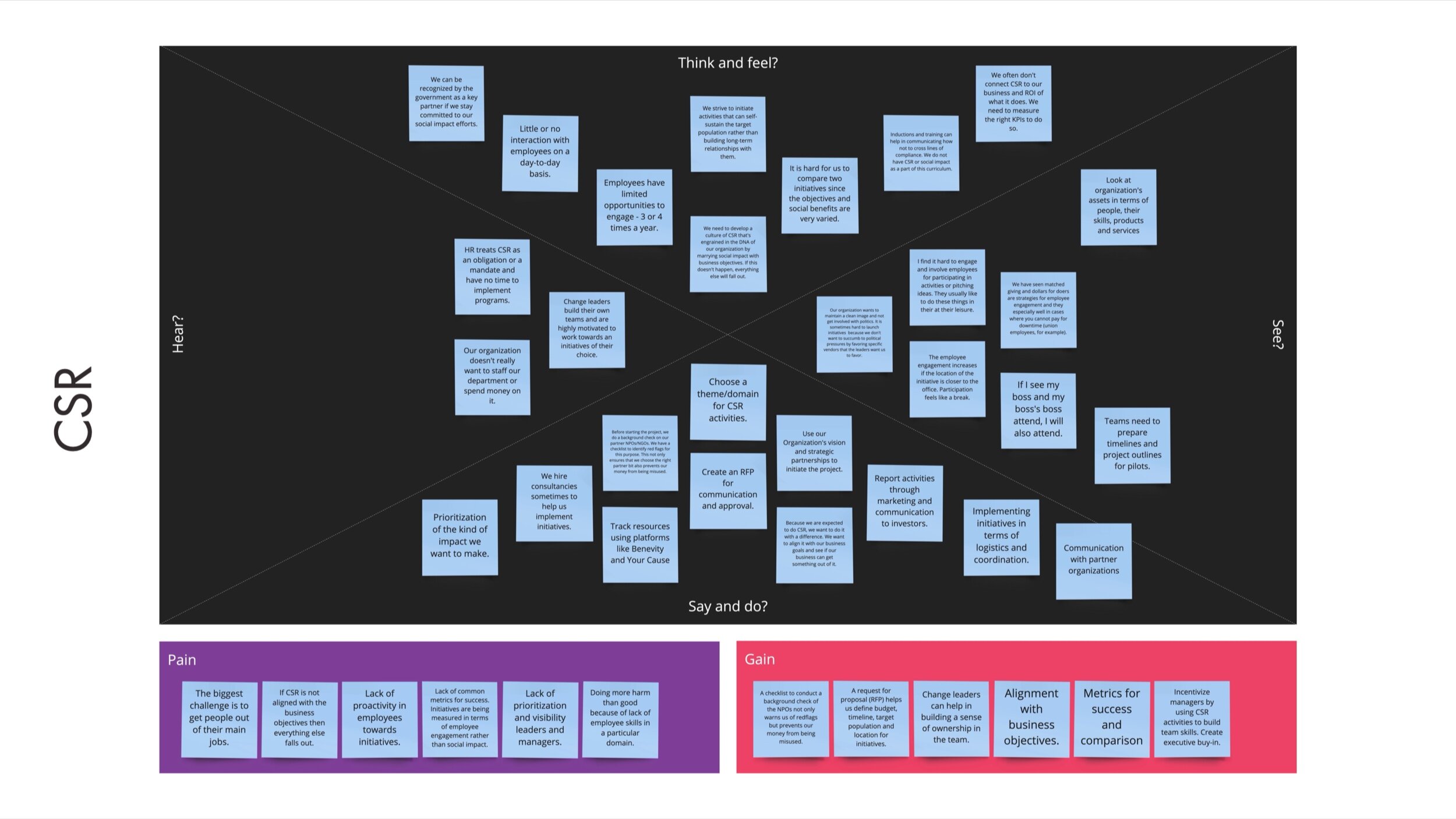

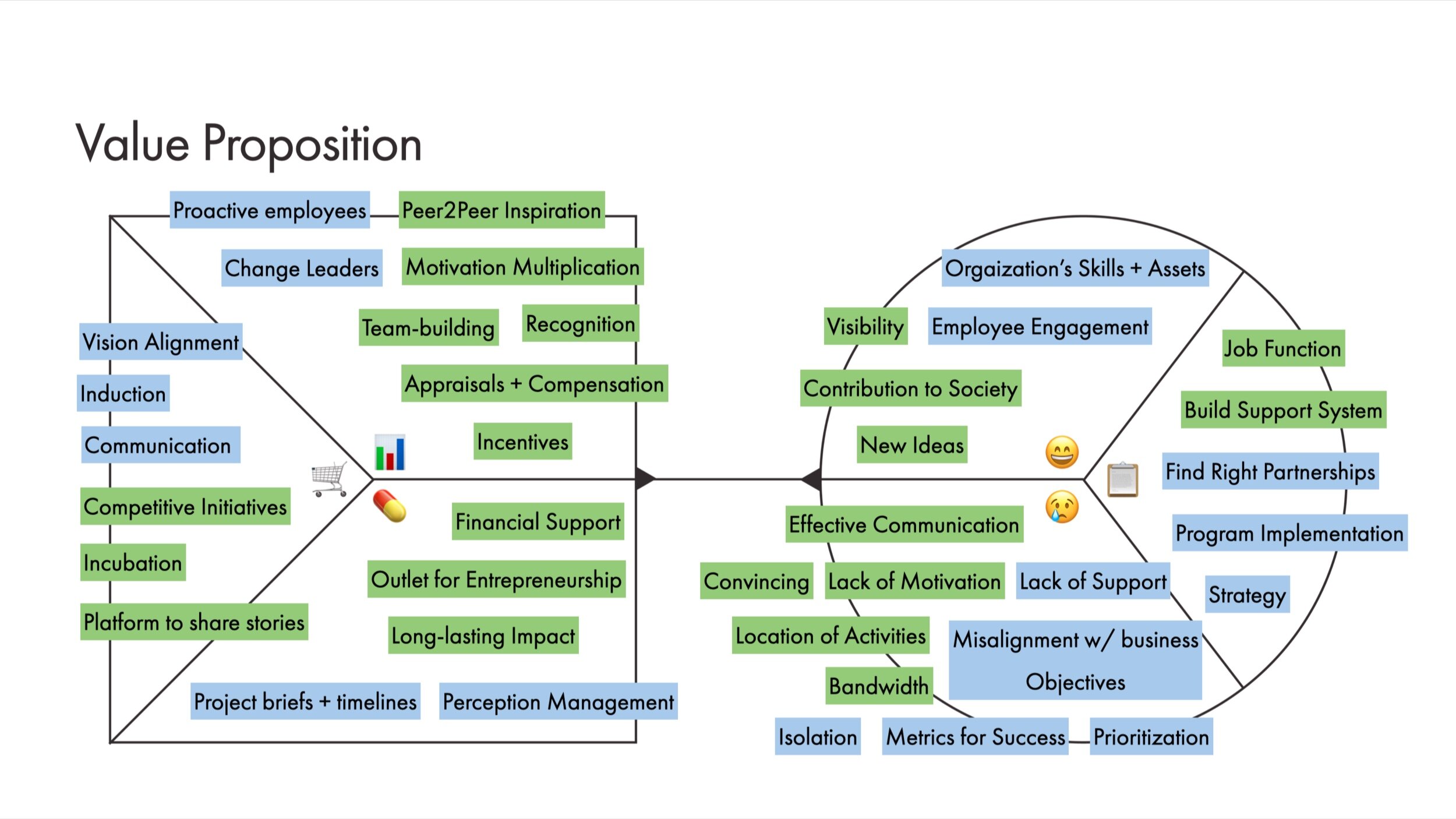
PROGRAM DEVELOPMENT
It was clear that employees want to contribute to social impact but they often struggled with lack of motivation and support from management. The CSR department, on the other hand, suffered from department-isolation and prioritization within companies. Corporations needed change from within, a change that would catalyze business innovation as well as create a culture of social impact. The Superpreneurship program was designed to bring this change in five phases: Alignment, Communication, Action, Incubation, and Inspiration.
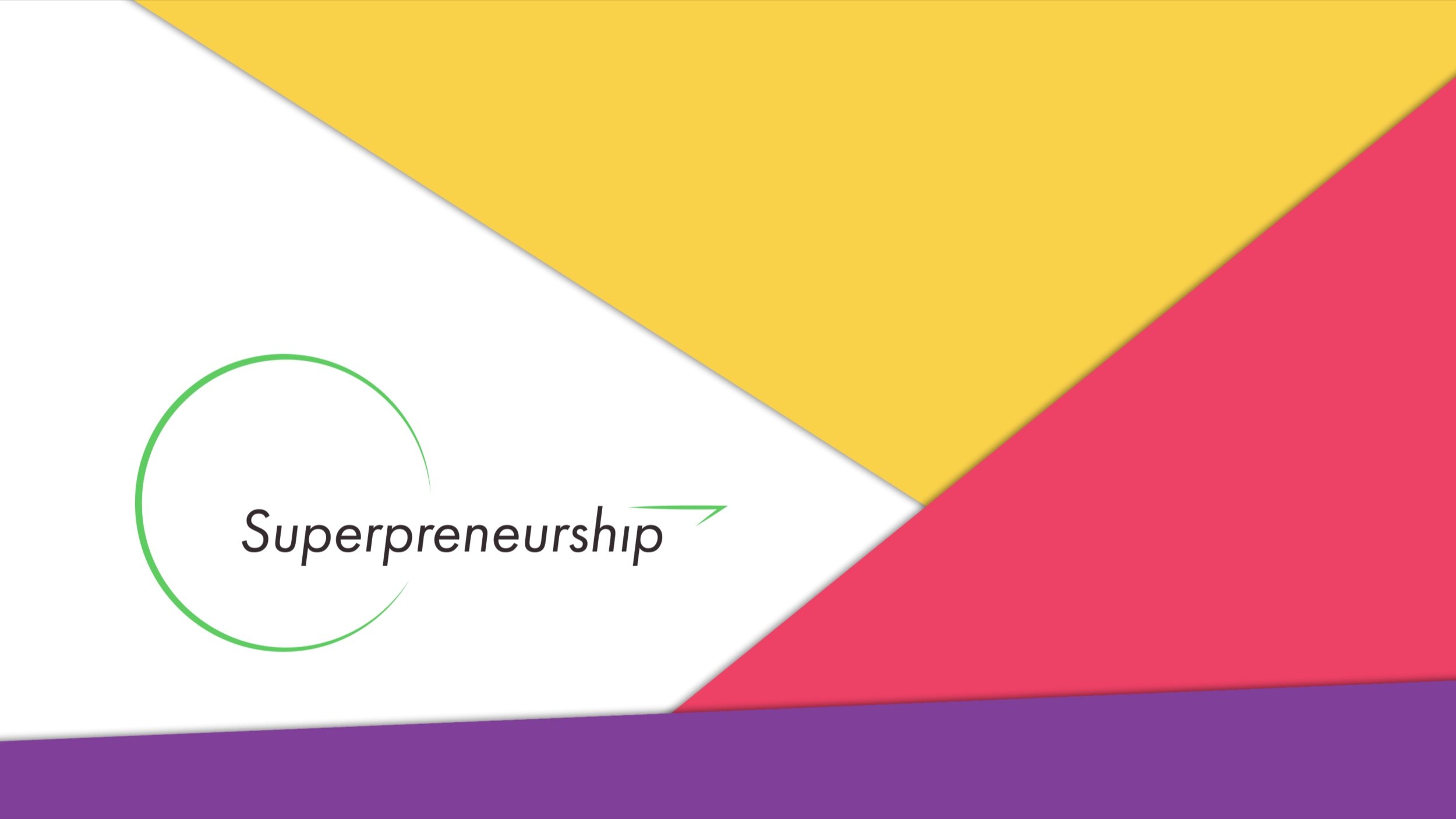
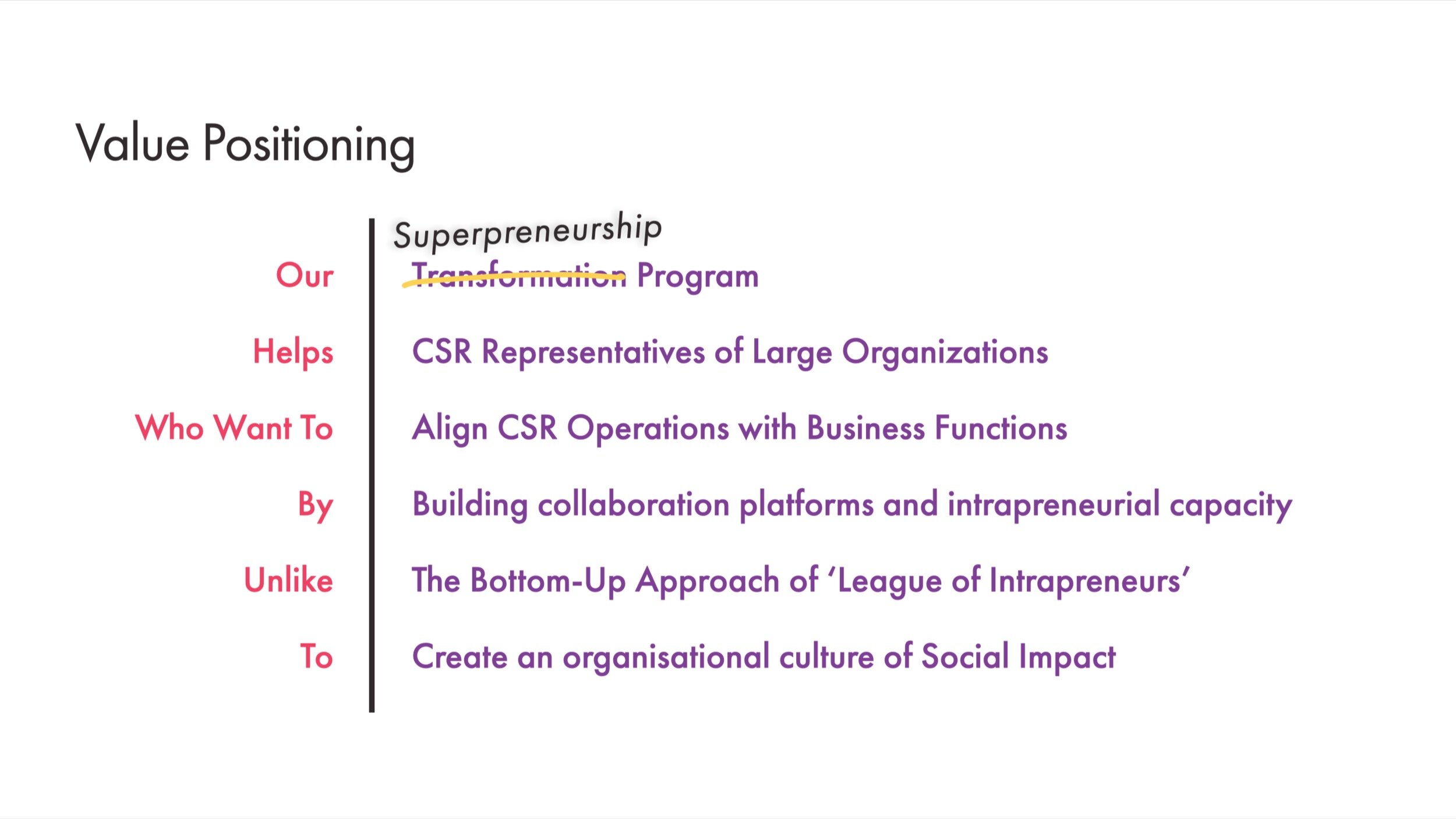
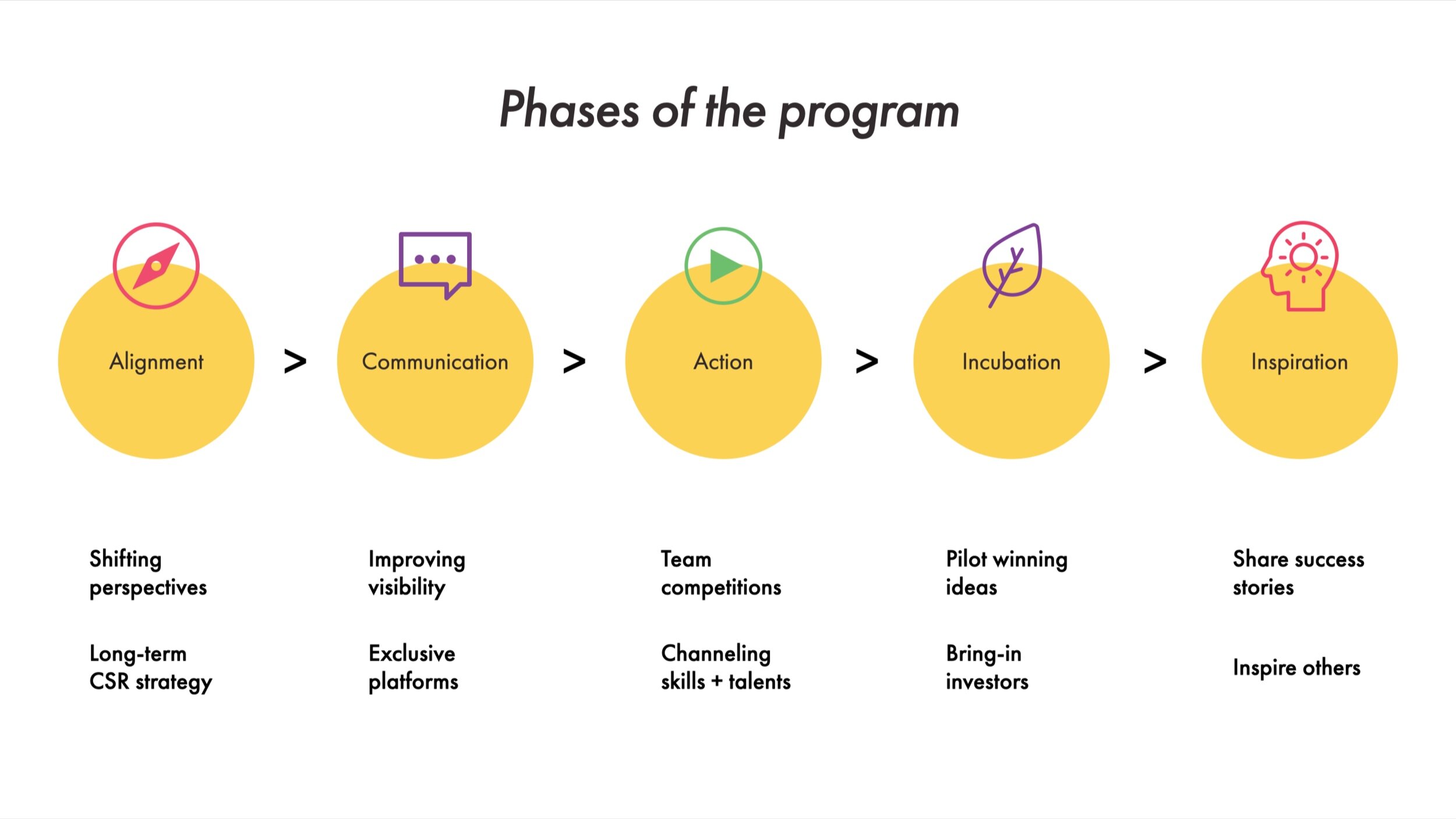
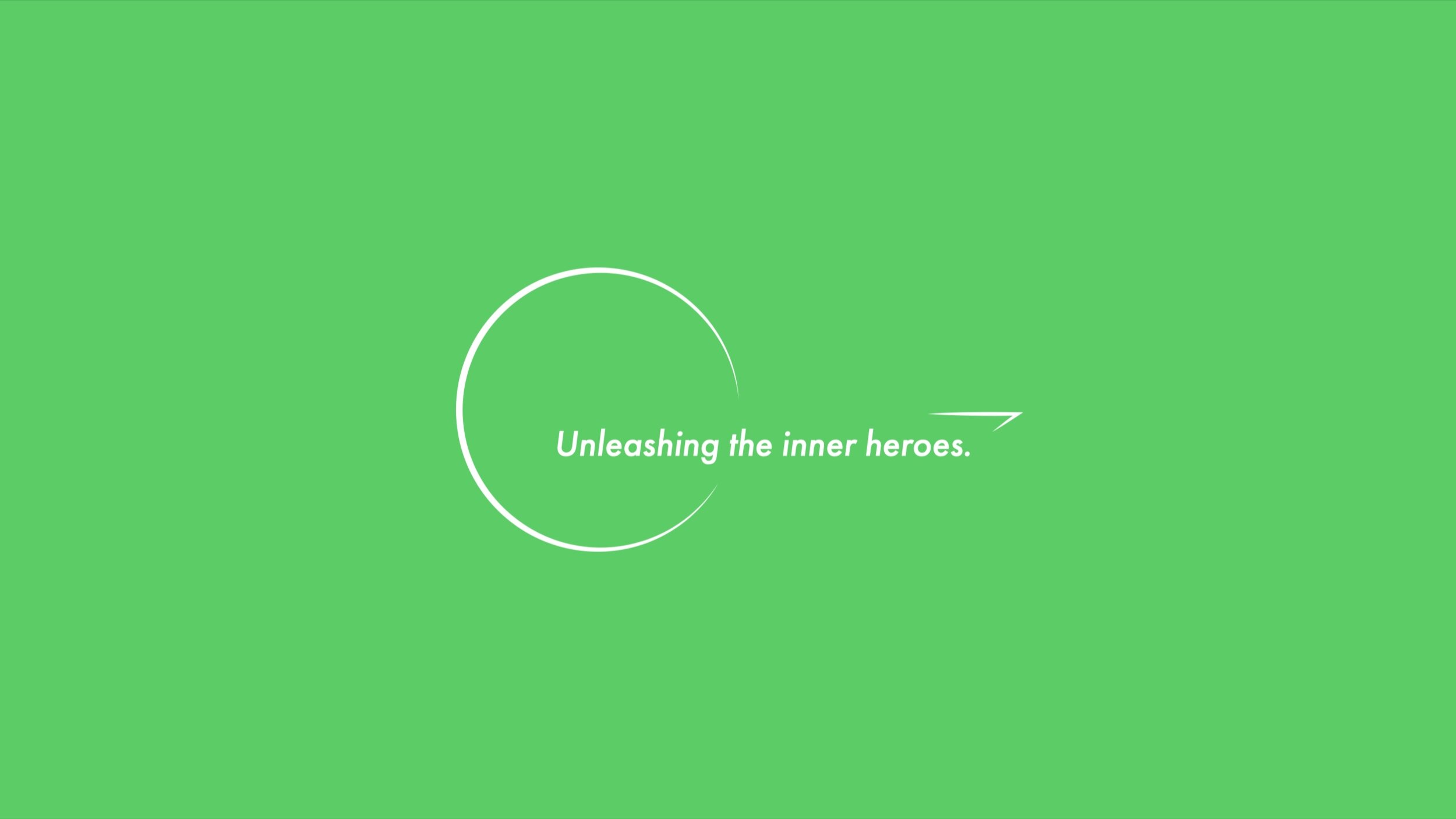
PROGRAM GUIDE
Finally, a program guide was developed to provide essential tools, activity instructions, and recommendations for the first three phases of the program (Alignment, Communication, and Action).
Alignment focuses on shifting perspectives at different levels of the organization and creating a long-term CSR strategy which is in-line with the business objectives of the organization. This is necessary for mustering the support of senior management.

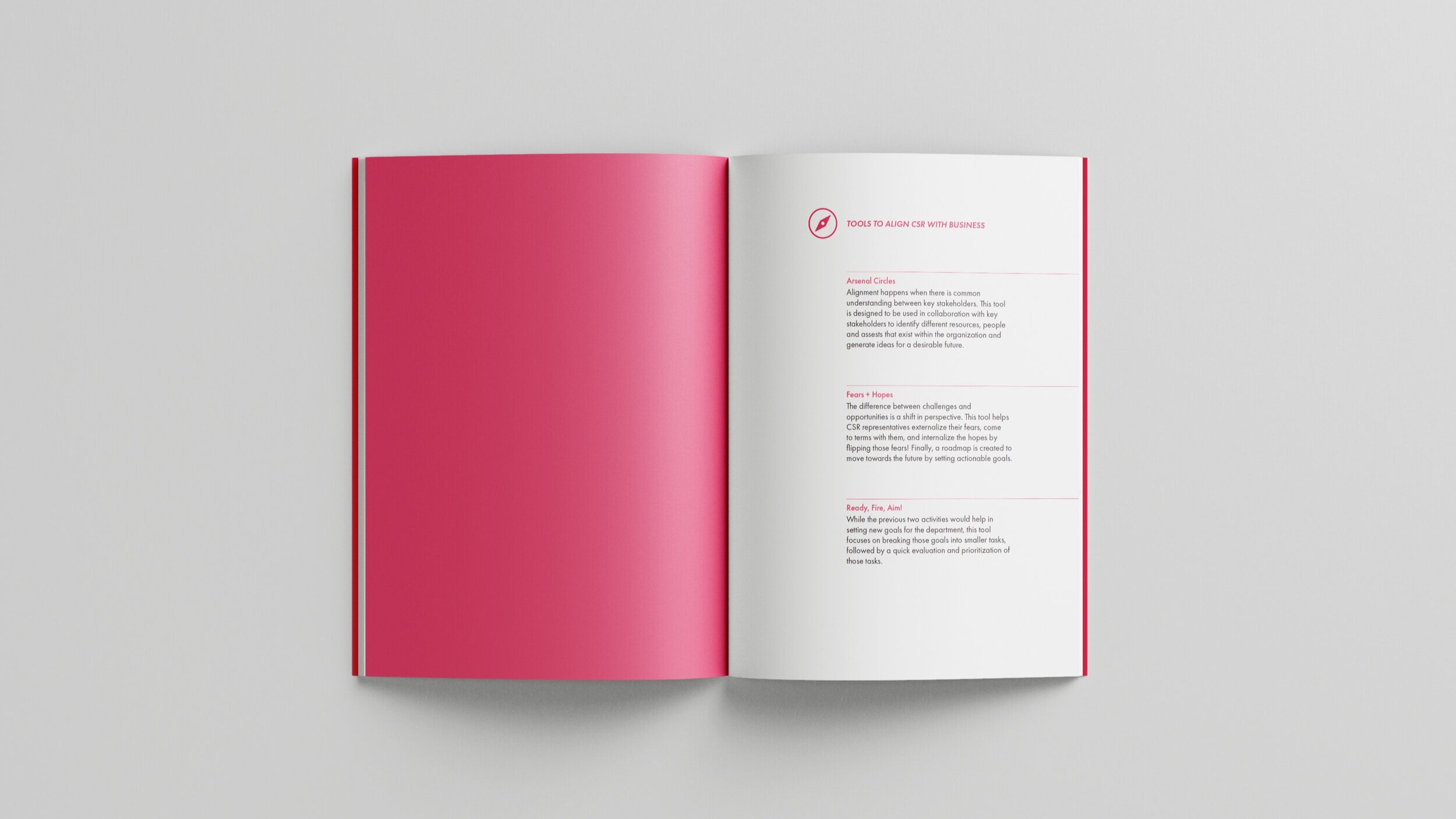
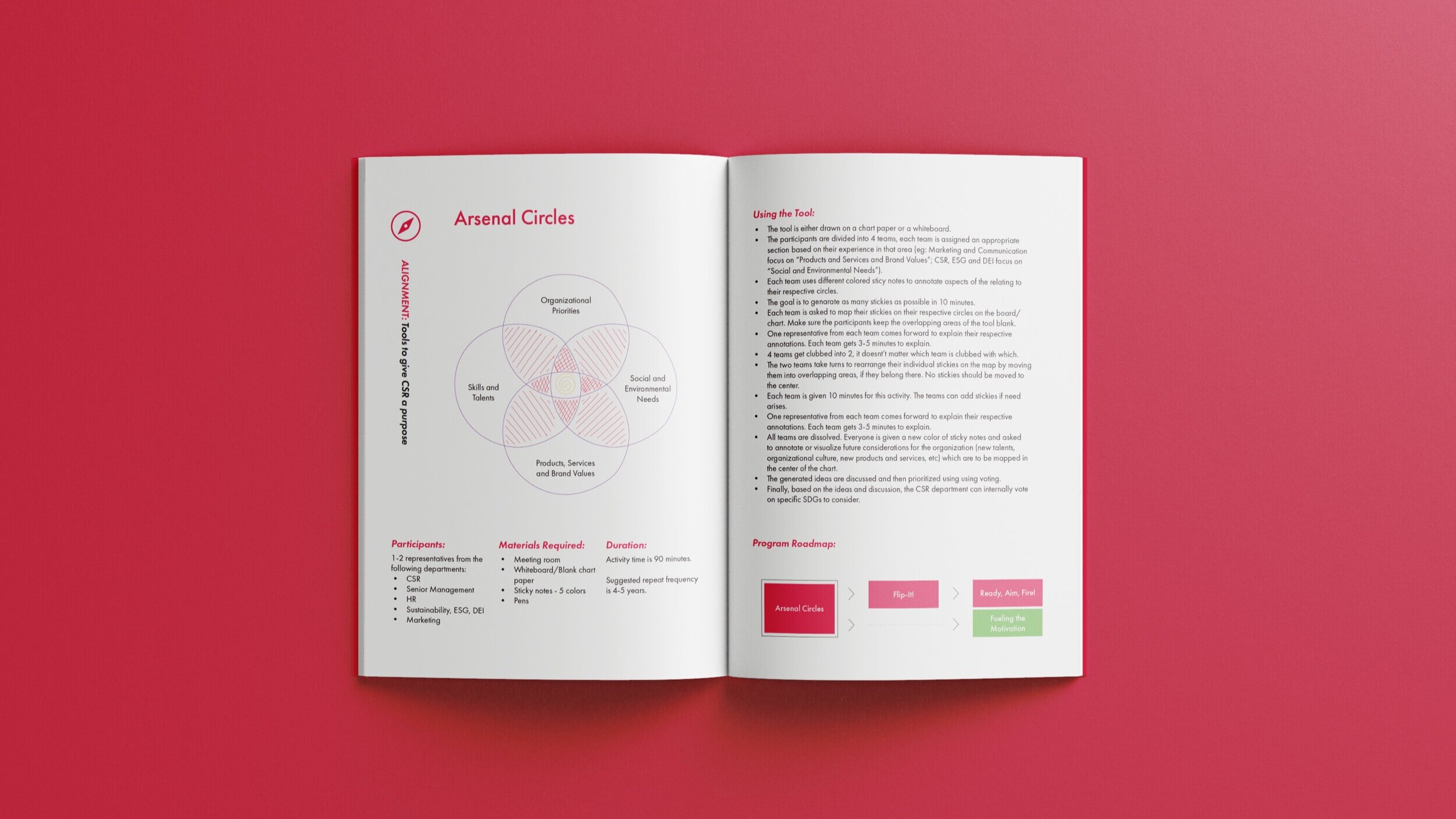

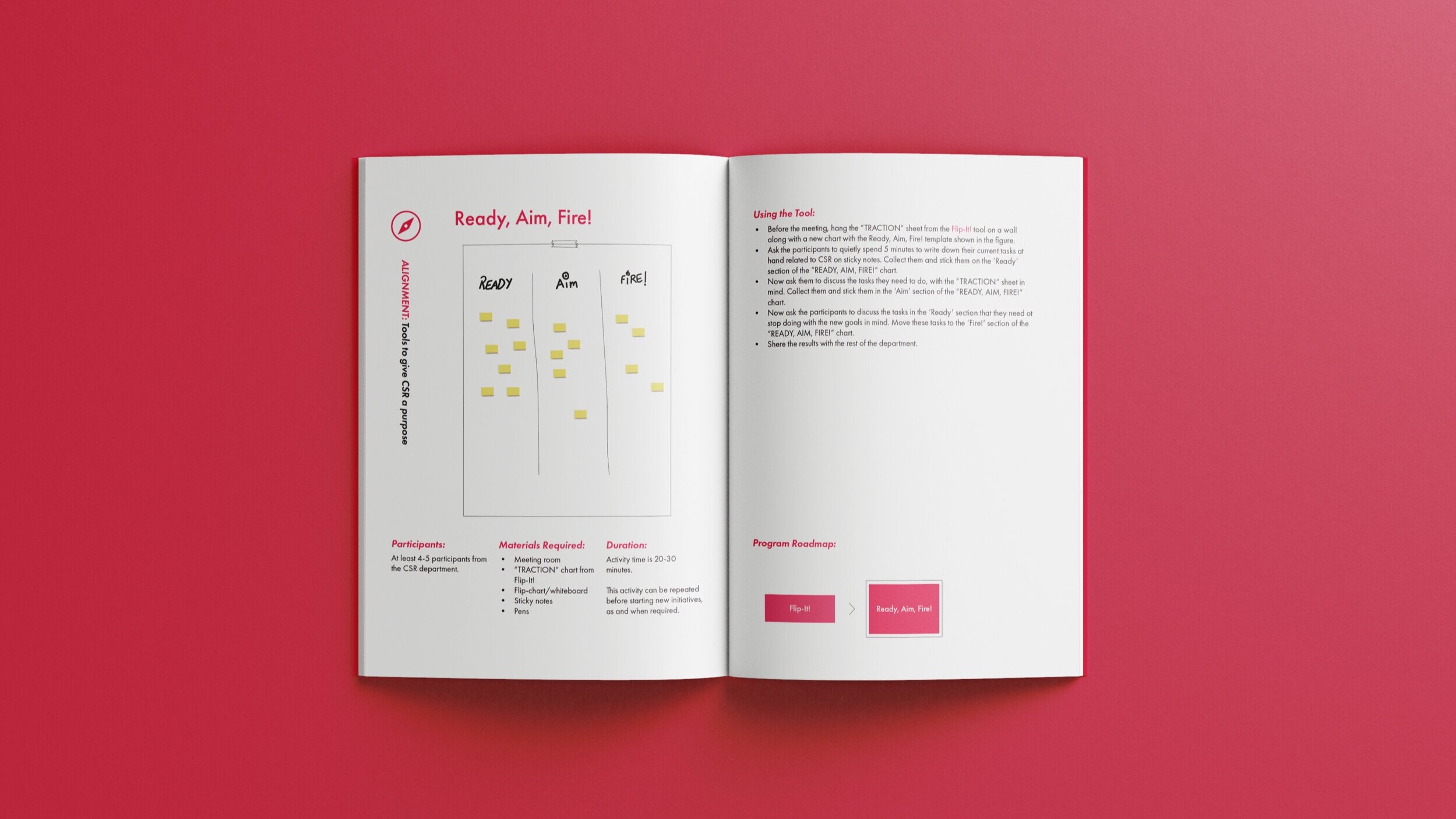
Communication focuses on improving visibility of the CSR department by creating exclusive avenues for communication such as organizational artifacts, induction sessions and culture walls.
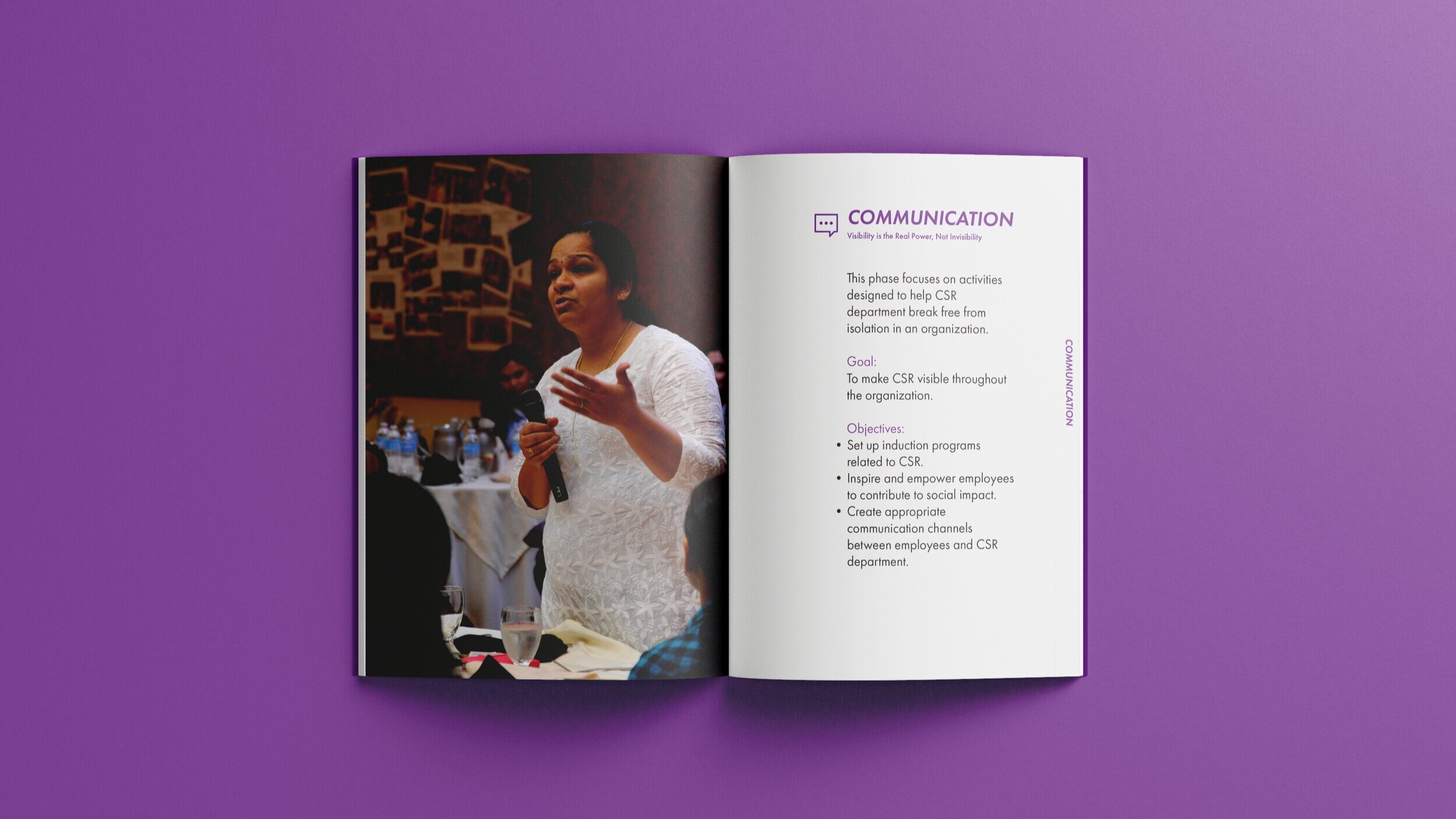


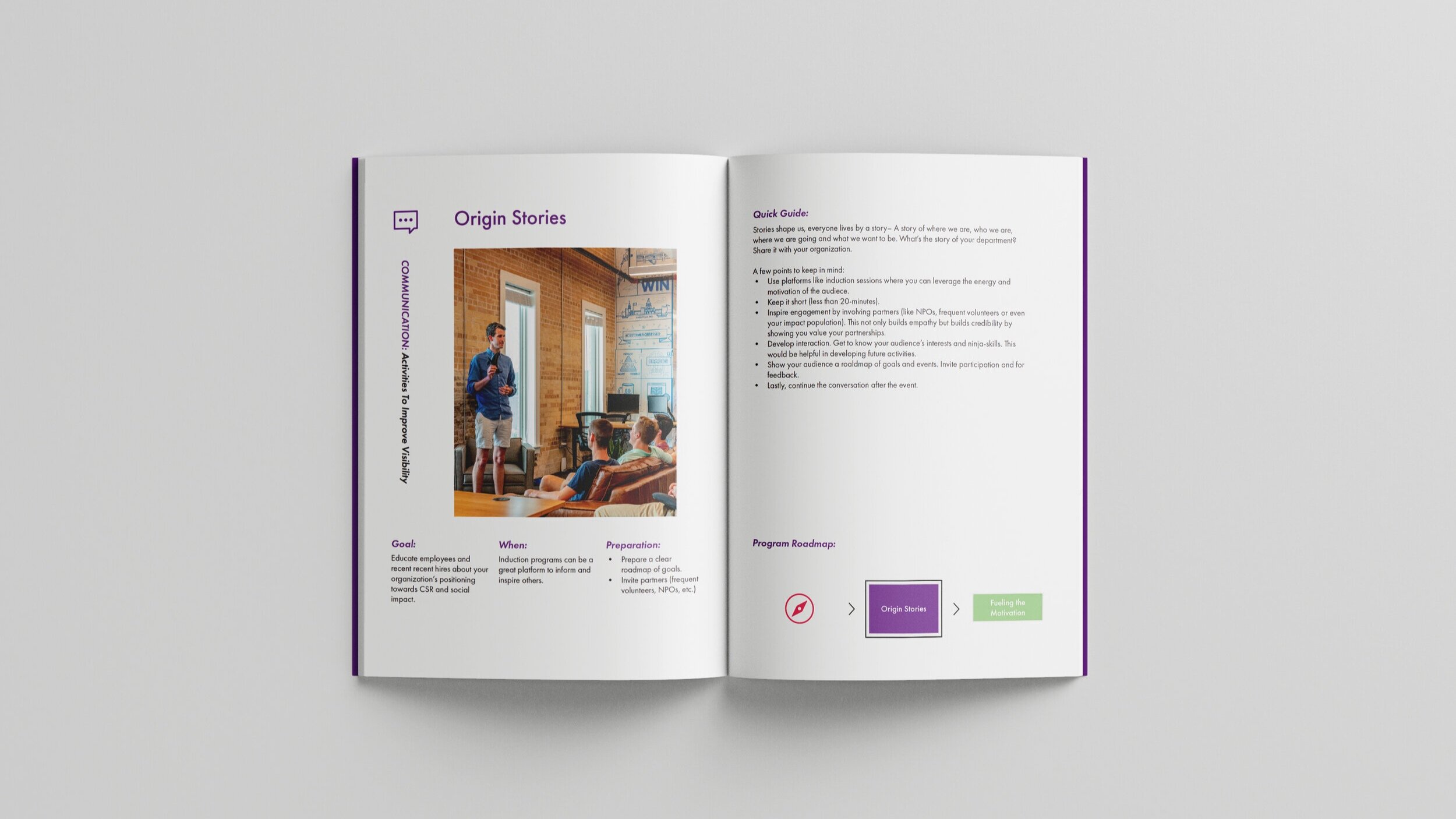
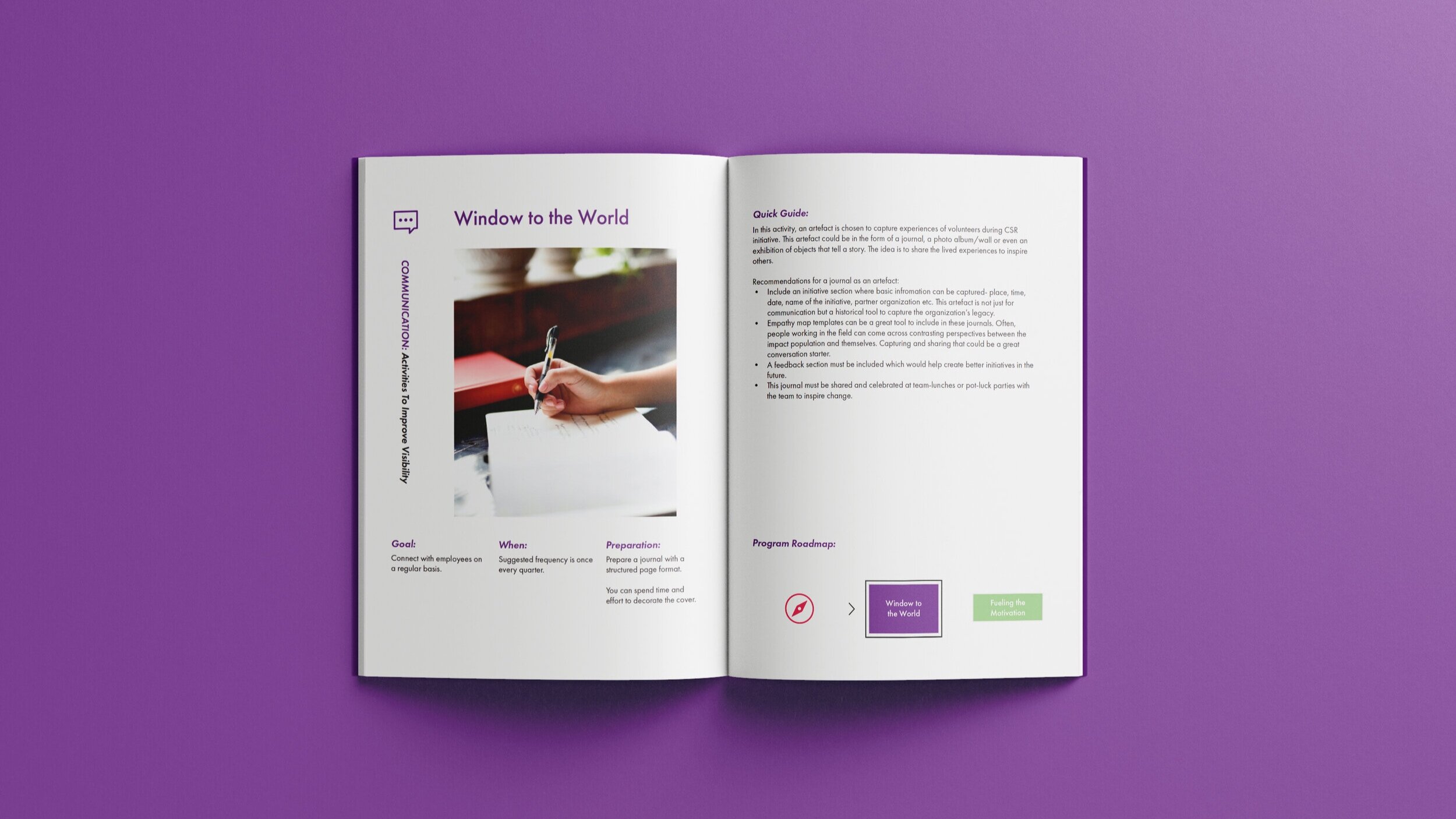
Action provides a structure for recurring competitions in the form of design sprints to channel skills and talents in the organization towards pressing societal issues.










